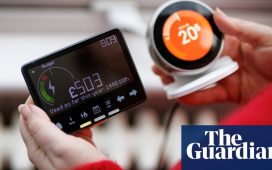Stay informed with free updates
Simply sign up to the UK energy myFT Digest — delivered directly to your inbox.
Not that long ago, if you had told journalists across the world they would soon be writing thousands of words about a boxy metal contraption called a heat pump, few would have believed you.
And yet today they are doing just that, as government efforts to cut carbon emissions have thrust these unglamorous home heating gadgets into the limelight.
Because heat pumps run on electricity, which is relatively easy to decarbonise, they have become an important net zero tool for buildings, the running of which accounts for a quarter of global energy-related emissions. That’s put them at the centre of bruising debates over the pace and cost of greener heating.
But this week brought another reminder that, when it comes to switching to heat pumps, few countries offer a bleaker case study in what not to do than Britain.
On Monday, Rishi Sunak’s government issued a statement confirming that, thanks to “one of the most generous schemes in Europe”, homeowners could get a £7,500 subsidy that could make heat pumps cheaper than a gas boiler.
This is the same government that just five weeks ago sent a chill through the heat pump industry by loosening targets for a shift away from fossil fuel heating.
It’s further evidence of the muddled, contradictory approach that successive administrations have taken towards these machines.
And it helps to explain why UK heat pump sales last year were a puny 1.9 per 1,000 households, putting the country a distant last behind 20 other European nations ranked by the European Heat Pump Association.
Everyone from top-performing Finland (with 69 sales per 1,000 homes) to mid-ranking France (20) and Ireland (10) did better.
The frustrating thing is, it didn’t have to be like this.
To begin with, the UK lost the plot on encouraging fossil-free heating in newly built homes.
These measures were critical for a country that, unlike many others, had developed a large gas network after discovering North Sea gas, plus an effective gas industry lobby.
In 2006, change beckoned. The then Labour government revealed plans for all new homes to be built to a “zero carbon” standard by 2016, meaning annual net carbon emissions from energy use would have to be zero.
But in 2015, a Conservative government abruptly scrapped the standard on the grounds it would slow the rate of home building.
That was a hammer blow for heat pump industry hopes that the standard would kindle the supply chains, trade skills and market certainty needed.
A subsequent Conservative government unveiled a “future homes standard” in 2019 to end fossil fuel heating systems in new-build properties, but not until 2025.
As a result, year after year, more and more new homes were connected to the gas grid, even as subsidies to replace gas boilers with heat pumps in existing homes were increased.
Small wonder that only 72,000 pumps were fitted last year, well short of the target that former leader Boris Johnson’s government set for 600,000 annual installations by 2028.
The UK has also dithered on another big heat pump barrier: relatively high electricity prices.
Heat pumps are vastly more efficient than gas boilers. They can produce three to four times as much heat energy per kilowatt hour of electricity used.
But that advantage evaporates when electricity is three times more expensive than gas, which it often has been in the UK.
That is partly because of policies that actively increase the price of electricity relative to gas. As much as 12 per cent of electricity bills have been made up of environmental and social levies recently, compared with 3 per cent of gas bills. Efforts to narrow this gap have been mooted for years but have yet to materialise.
Likewise, the UK still lacks enough of the big one-stop shops and agencies that have emerged from Ireland to the US state of Maine to help homeowners navigate the baffling mix of heat pump grants and installation options.
Also, it has a workforce that is very good at installing the gas boilers popular in the UK that typically cost £2,500-£3,000 to buy and fit, but is less accustomed to heat pumps, which can be more complex and far more costly.
None of these problems are insurmountable. The solutions are known and tested. A G7 country like the UK has the resources to implement them. One day, it might finally get a government with the will and acuity to put them in place.









